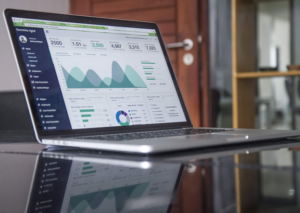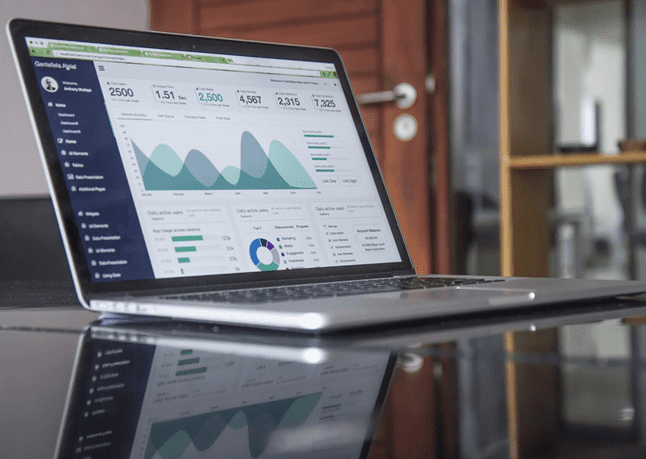Speech data collection is a significant step for machine learning, and here is the source for the best speech datasets you should know.
Important About Speech Data Collection Service That You Should Know

What do you mean by Speech Data Collection?
Let’s talk about what voice collecting is before we get into how to tailor your data gathering project. The process of gathering and measuring high-quality audio data from various sources is known as speech data collection.
The Automatic Speech Recognition (ASR) technology relies heavily on data collecting. The technology is in charge of interpreting and translating many languages in a matter of seconds. However, the system must first be exposed to a large amount of high-quality speech data for it to correctly read and translate the audio data.
You must make certain decisions about your project before you begin collecting and measuring voice data. While some customers know exactly how they want their speech data to be structured, others may have ambiguous needs, either because they are ignorant of all the factors or because they have flexible expectations in speech data collection.
How GTS helps in speech data collection service
Data of excellent quality: High-quality voice data on a data management platform that is simple to use
Any audio specifications: Enjoy complete acoustic and scenario setup versatility. We’ll set up anything from inside a car to a dinner party.
Any age group: We collect voice data in 35+ languages, both locally and internationally; on a small scale or with hundreds of participants in speech data collection.
Solutions for Customized Speech Data Collection
GTS provides end-to-end speech data gathering services to ensure that your voice-activated technology is suitable for a multilingual audience. From establishing a natural language corpus to coordinating in-field data collecting, transcription, and semantic analysis, we can handle any project.
Our clients may quickly and easily access their data and related metadata using GTS custom-built multilingual data management platform via an easy-to-use API.
more like this, just click on: https://24x7offshoring.com/blog/
Speech Data Collection that Suits Your Needs
We all know that voice recognition data gathering initiatives come in many forms and sizes. Some initiatives involve a great deal of preparation, ingenuity, and invention due to particularly precise acoustic or participation criteria. Those are fantastic projects in speech data collection.
Other projects may have fewer requirements, but they may demand a quick turnaround time or a large number of speech samples. We adore such initiatives as well. We can custom-tailor a collecting solution to fit your needs, regardless of the extent and volume of your speech data-gathering project.

How to improve your Speech Data Collection?
Languages Chosen
The first step in customizing voice data is determining which languages must be gathered. You must know if the participants will be native speakers, non-native speakers, or a mix of both. Knowing this before the project begins would assist to speed up the entire process while also improving the quality of the data obtained.
Dialects & Accents from Other Countries
You must also decide if you want to record your speech data collection with a different or foreign accent. You may tailor your collection to capture different dialects from participants from different parts of the world. You can, for example, include people who speak in a range of dialects and accents to prevent exposing the voice recognition algorithm to systematic bias.
Nations to Be Targeted
You must also decide whether or not you wish to gather voice notes from a certain country. If not, you can use accents from a variety of nations where the chosen language is not an official language.
The accents of Spanish speakers from Mexico and Spain, for example, are significantly distinct. As a result, you must decide if you want to expose your algorithm to a variety of accents or keep it to a single location.
Demographics
You may also add demographic factors to your data collection. Begin by focusing on a certain male vs. female or children vs. adults’ distribution. For speech data collection and measurement, this would be your target population.
In general, these linguistic and demographic data may be GTS razed by a concise statement about your target population, such as gathering voice notes from native and non-native Spanish speakers throughout the world.
Structure of Scripts
You may also change the structure of your script to suit your collection requirements. You have the option of writing a single script for all participants or creating separate speeches for everyone. For example, you may have one group of female participants read one screenplay while the others read another.
Scripted vs. Natural Language
Participants would be directed to read aloud what they see on a screen using scripted speech data collection. Natural language would present the participant with a specific scenario, from which they might narrate their ideas.
Repetition and wording

You must also know how many total utterances your algorithm will require to interpret and store data. The bigger the amount of data required, the greater the number of participants and their utterances required.
For example, if each participant made 60 utterances, the total number of repetitions would be 1500. You can adjust the participant’s speech script depending on the type of speech data collection.
Size of the Collection
Depending on how much data you want to feed your ARS system, the size of the participants will vary. It would also influence the number of words per participant and the number of people needed.
Sound Quality
While capturing voice notes, keep an eye out for distracting background noises. It has the potential to affect the quality of data gathered and, as a result, interfere with the appropriate interpretation of that data by a speech recognition system.
Structure of the Audio
For the project’s audio recordings or files, you may have certain organization or post-processing needs. This may need the use of leading or following silences, as well as the removal of sounds such as taps or clicks. It’s also possible that you’ll need to mix a few files in speech data collection.
To learning “Important About Image and video Annotation That You Should Know” that is important for speech data collection:
Continue Reading, just click on: https://24x7offshoring.com/blog/
For more Info about speech data collection do check out the video above from Speech Therapy .
translate the audio data: https://www.happyscribe.com/translate-audio
High-quality voice data: https://www.cmswire.com/digital-asset-management/9-voice-datasets-you-should-know-about/
semantic analysis: https://www.expert.ai/blog/natural-language-process-semantic-analysis-definition/#:~:text=Semantic%20analysis%20describes%20the%20process
non-native speakers,:https://dictionary.cambridge.org/dictionary/english/non-native-speaker
type of speech data collection: https://summalinguae.com/data/types-of-speech-recognition-data/
Speech data collection is the process of collecting audio recordings of people speaking. This data can be used to train speech recognition models, which are used to transcribe audio recordings into text.
There are many different ways to collect speech data. One common method is to use a microphone to record people speaking in a controlled setting. Another method is to use a mobile app to collect speech data from people in their natural environment.
The speech data collected can be used to train speech recognition models in a variety of ways. One common method is to use a supervised learning approach. In this approach, the speech data is labeled with the corresponding text transcription. The speech recognition model is then trained on this labeled data to learn the mapping between audio and text.
Another method for training speech recognition models is to use a self-supervised learning approach. In this approach, the speech data is not labeled with the corresponding text transcription. The speech recognition model is then trained on this unlabeled data to learn the features of speech that are relevant to text transcription.
Speech data collection is an important part of the development of speech recognition models. The more speech data that is collected, the better the speech recognition models will be able to perform.
Here are some of the benefits of speech data collection:
- Improved speech recognition accuracy: Speech recognition models that are trained on more speech data will be able to transcribe audio recordings more accurately.
- New applications: Speech data collection can help to develop new applications that use speech recognition, such as voice-activated assistants and transcription services.
- Improved understanding of speech: Speech data collection can help to improve our understanding of how speech works and how it can be used to communicate.
However, there are also some challenges associated with speech data collection:
- Ethics: It is important to collect speech data in an ethical way. This means that the participants in the data collection process should be aware of the risks involved and should give their informed consent.
- Cost: Speech data collection can be expensive. This is due to the cost of the equipment, the cost of the participants, and the cost of data analysis.
- Data storage: Speech data can be large and complex. This means that it can be difficult to store and manage speech data.
Overall, speech data collection is an important part of the development of speech recognition models. However, it is important to be aware of the ethical challenges and the cost involved in collecting speech data.
different ways to collect speech data. Here are some of the most common methods:
- Crowdsourcing: Crowdsourcing is a method of collecting data from a large number of people. This can be done by asking people to record themselves speaking on a variety of topics. Crowdsourcing is a cost-effective way to collect speech data, but it can be difficult to ensure the quality of the data.Crowdsourcing speech data collection
- Recording people in controlled environments: This method involves recording people speaking in a controlled environment, such as a laboratory or a sound booth. This can help to ensure that the audio recordings are of high quality. However, it can be difficult to find people who are willing to participate in this type of data collection.Recording people in controlled environments speech data collection
- Using existing audio recordings: This method involves using existing audio recordings, such as TV shows, movies, or podcasts. This can be a cost-effective way to collect speech data, but it can be difficult to find audio recordings that are suitable for the specific application.Using existing audio recordings speech data collection
The best method for collecting speech data will depend on the specific needs of the application. For example, if the application requires high-quality audio recordings, then it may be necessary to record people in a controlled environment. However, if the application does not require high-quality audio recordings, then crowdsourcing or using existing audio recordings may be a more cost-effective option.
Here are some of the factors to consider when choosing a method for collecting speech data:
- Cost: The cost of collecting speech data can vary depending on the method used. Crowdsourcing is a cost-effective option, but it can be difficult to ensure the quality of the data. Recording people in controlled environments can be more expensive, but it can help to ensure the quality of the data.
- Quality: The quality of the audio recordings is important for the accuracy of speech recognition models. Crowdsourcing can be a good option for collecting high-quality audio recordings, but it can be difficult to find people who are willing to participate in this type of data collection. Recording people in controlled environments can help to ensure the quality of the audio recordings, but it can be more expensive.
- Time: The time it takes to collect speech data can vary depending on the method used. Crowdsourcing can be a quick way to collect speech data, but it can be difficult to find enough people who are willing to participate. Recording people in controlled environments can take longer, but it can help to ensure the quality of the data.
Overall, there are a number of different methods for collecting speech data. The best method for collecting speech data will depend on the specific needs of the application.
